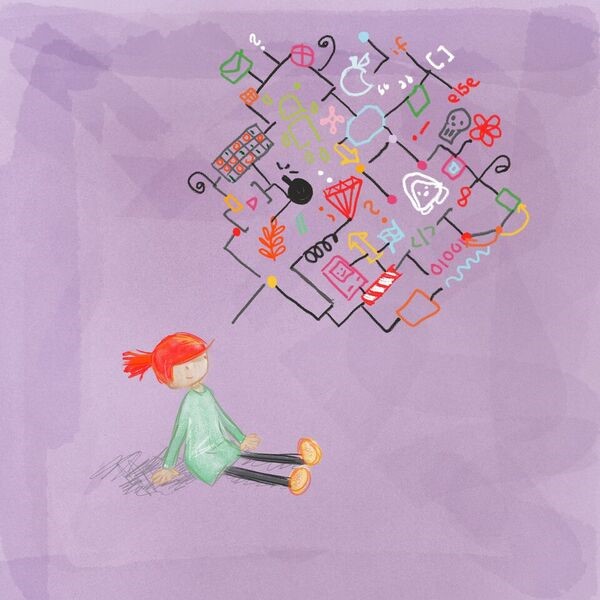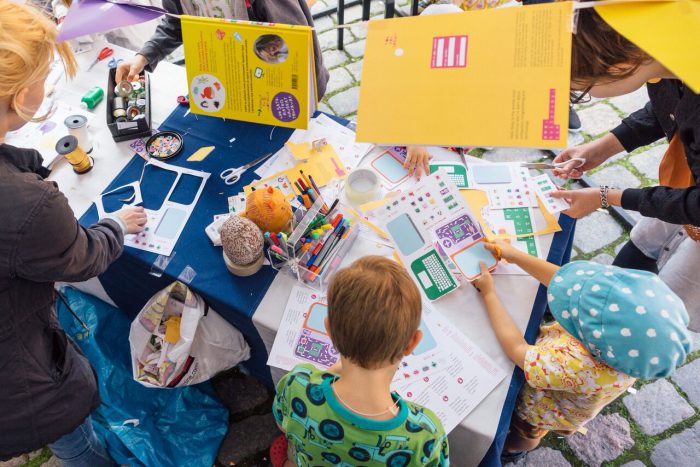Exploring the Whimsical World of Computing with Linda Liukas
Linda Liukas is a programmer. She is also a storyteller and an illustrator. Not the most typical of combinations, but Linda makes it seem natural.
Her book Hello Ruby is a whimsical tale of a child exploring the world of computing. A precocious little girl with a big imagination, Ruby stomps around her world making new friends such as a beautiful Snow Leopard, friendly green Robots, and the eccentric yet smart Penguin.
The children’s book has been a hit with kids, parents and educators worldwide, having been translated into 10 languages, including Japanese and Korean. This Hour of Code, we speak to the programmer-storyteller who’s inspiring young children to learn more about coding.
[caption id="attachment_15815" align="alignnone" width="600"] Ruby: The little girl with a big imagination[/caption]
Ruby: The little girl with a big imagination[/caption]
Linda, you started programming when you were 13, and even created a site for former US Vice President Al Gore. But you stopped for a while. How did you rekindle your passion for it?
I was studying business at Stanford University and came upon this product design course. The experience made me fall in love with programming all over again. It made me realize that my interests and personality traits allow me to enjoy programming. For example, when I was a little girl, I always enjoyed telling stories and creating my own little universes. In programming, you do exactly the same. You decide on the rules, names, vocabulary and everything that unfolds in the world you imagine with code.
That’s a unique perspective on programming, the way you relate it to storytelling…
It came with learning that there’s not only one way to be a programmer. I had this weird idea that the true programmer is the one who writes the hard-core back-end algorithms but in reality, there are so many different career choices in this industry.
Personally, I wanted to explore how to bring together storytelling and coding. Maybe I won’t be the next Steve Wozniak, but I can always be myself—and bring my own voice into this realm.
Have you ever experienced difficulties in coding?
Absolutely! Even today, I sometimes feel like an “impostor” calling myself a programmer because I don’t know everything there is to know. And most programmers share the same feeling. This is a field that is always evolving, and no one can master everything about programming. I’ve encountered little girls running up to me to say, “Oh I’m an awful programmer, I made a mistake!” I make it a point to remind them that making mistakes is the only way to learn new things.
[caption id="attachment_15825" align="alignnone" width="612"] Linda believes that embracing uncertainty is part and parcel of learning to be a programmer[/caption]
Linda believes that embracing uncertainty is part and parcel of learning to be a programmer[/caption]
In your view, why should everyone learn programming? And why is it important to start young?
In today’s world, we need more people to embrace technology as a tool to solve problems around us and use it as a tool for creation. A lot of the coding discourse today is centered around GDP growth. For me, it’s exciting to see both artists and researchers embrace programming as a medium for creative expression.
Many believe we need to start young to become a successful programmer, but I always tell adults that they can easily learn programming too, especially with all the information available today. However, from my own anecdotal experience, we start to define ourselves around the age of 10-12. It’s an important stage of growing up and we need to teach young children to see that while computers are binary, technology is not. Technology and coding are just tools, and not what defines their identities.
Let’s talk more about Hello Ruby. Other than the book, you’ve also developed downloadable exercises on your website and now, an application?
We’re all very surprised at the excitement around Ruby. We never anticipated that teachers would be the most ardent Ruby fans. We’ve created some classroom materials that explain the foundations of code in a fun and playful manner, and we’re developing apps now. The first is coming out in a few weeks’ time. We’re using it to teach the concepts of computational thinking through open-ended play.
We’ve recently launched our first activity on Code.org. It’s an unplugged activity where kids build their own computer. Instead of using electronics or hardware, they’re building it out of paper! They piece together the GPU, CPU, and different types of memory—the RAM, the ROM, and the hard drive—and once they’re done, they create their very own application for the computer.
Through this activity, we want to instill the pride and sheer excitement that people had in the early days when computers were not so foreign, and you could actually touch a transistor and physically put a computer together. I believe when it comes to teaching kids to code, it’s more about instilling in them a sense of curiosity, encouraging them to be adventurous and have a fearless relationship with technology.
[caption id="attachment_15845" align="alignnone" width="700"] Hello Ruby unplugged activity for Hour of Code[/caption]
Hello Ruby unplugged activity for Hour of Code[/caption]
Thank you Linda for your time and insights into programming! Find out how to organize your very own Hello Ruby unplugged activity, or other Hour of Code tutorial events right here .